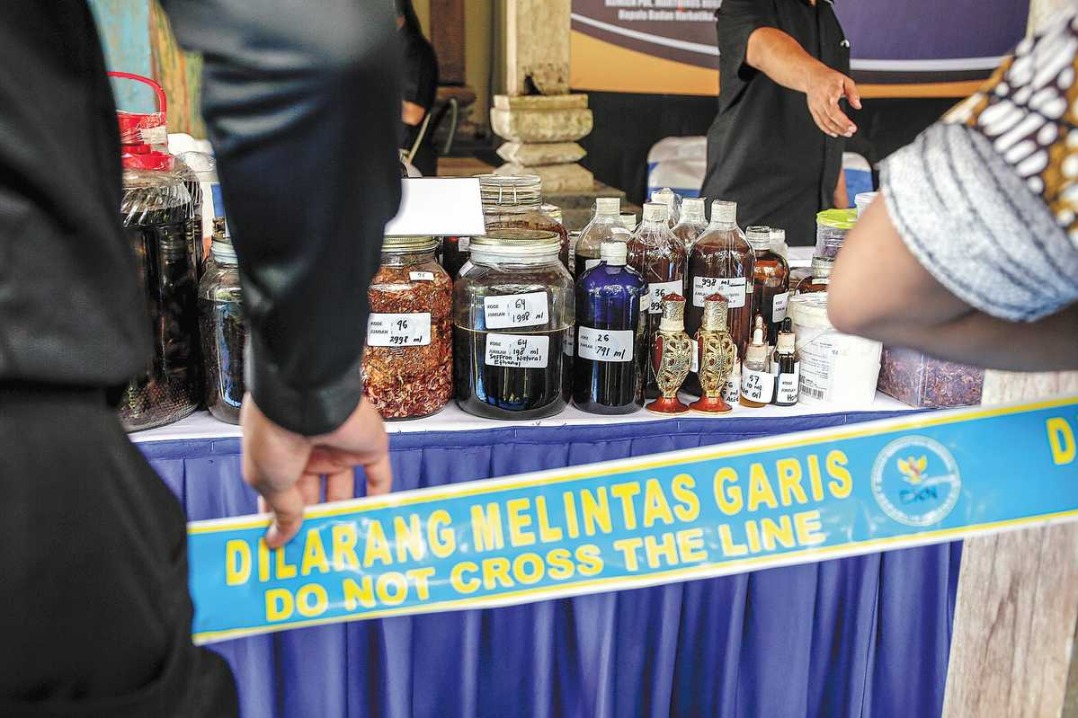Malawi farmers and E. Africa peers hit by pests

Farmers in Malawi have been battling against pests ravaging their crops, raising fears for the security of food supplies in the southeast African country.
The culprit is the fall armyworm, a type of caterpillar attracted to grass pastures and cereal crops. As Malawi grapples with the pest, farmers in East Africa are contending with locusts, which have left a trail of destruction on farms.
Fall armyworms usually feed at night and, in the case of corn, damage the crop by the chewing leaves of corn stalks. They attack more than 80 species of crops, according to the United Nation's Food and Agriculture Organization.
On Monday, the Malawi Ministry of Agriculture, Irrigation and Water Development advised farmers to regularly inspect their crops, especially the underside of cereal crop leaves for signs of attacks by the pests.
In a media statement, the ministry said it has told farmers to report any suspected outbreaks of armyworm infestation to their nearest agricultural office or administrative officers within their communities.
"The officers will provide advice on how to manage the pests and pesticides for the control of these armyworms," the statement said.
According to the ministry, fall armyworms are highly destructive and, if not controlled, can wipe out the affected crops.
Tearfund, a charity, said that unlike the African armyworm, which eats only corn, the fall armyworm eats anything that farmers grow. The females lay thousands of eggs during their short lives, and the moths can fly up to 100 kilometers a day. The fall armyworms are also resistant to common pesticides.
To curb the pests' invasion, the Malawi government has been distributing certain pesticides, installed pheromone traps to monitor outbreaks and intensified training for farmers, including with awareness campaigns in communities.
Researchers are developing an integrated pest management strategy through a comprehensive research program. The strategy will help farmers to practice a variety of control options, rather than relying overly on pesticides.
In places, farmers have come up with homemade remedies to control the crop-munching pests. One such remedy involves a solution of water, with pounded chilli peppers and salt; another uses detergent with a salt solution to kill the pests.
Some farmers have even turned to a soup made from a small variety of fish known as usipa. Once the soup is sprayed on the crops, it attracts ants, which in turn feed on the fall armyworms.
In 2017, Malawi President Peter Mutharika declared 20 of the country's 28 districts disaster areas after an armyworm outbreak that year and called for international help.
Neighbors affected
The problem is also affecting other parts of Africa. According to the International Center of Insect Physiology and Ecology, an international scientific research institute headquartered in Nairobi, Kenya, the fall armyworm has been spreading at an alarming rate across the continent. It was first reported in Africa in 2016.
Estimates from 12 African countries indicate that the pest is causing annual corn yield losses of between 8 and 21 million tons, costing up to $6.1 billion. The fall armyworms' encroachment affects the more than 300 million Africans who, directly or indirectly, depend on the crop for their food and livelihoods, the institute said.
In East African, farmers are struggling in the face of swarms of desert locusts, with Kenya being their most recent target. The locusts have caused despair in the northeastern part of the country.
Hassan Gure, an official from Wajir County Department of Agriculture, said the locusts have moved in a front extending more than 175 km and consumed about 10 percent of the crops they encounter. Aerial pesticide spraying began on Monday and is due to last three days.
In December, the Food and Agriculture Organization warned that unless early and sustained measures are taken to control the desert locusts in Ethiopia and Somalia, the pest would spread to other Eastern African nations, including Djibouti, Eritrea, Kenya, South Sudan and Sudan.
In Ethiopia, the locusts covered nearly 430 square km and consumed 1.3 million metric tons of vegetation over two months, according to the UN agency.
































